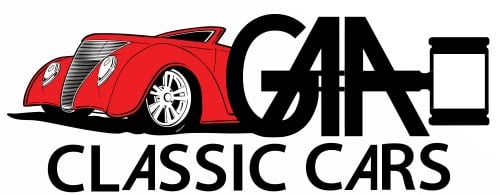Mecum Auctions is set to host another exciting auction at Osceola Heritage Park in Kissimmee from July 9-12, 2025. Their highly anticipated Florida Summer Special auction is expected to feature around 1,500 vehicles. A notable highlight of the auction includes an assortment of Shelby vehicles, which are likely to generate intense bidding. This presents enthusiasts with a unique chance to own a piece of American performance history.
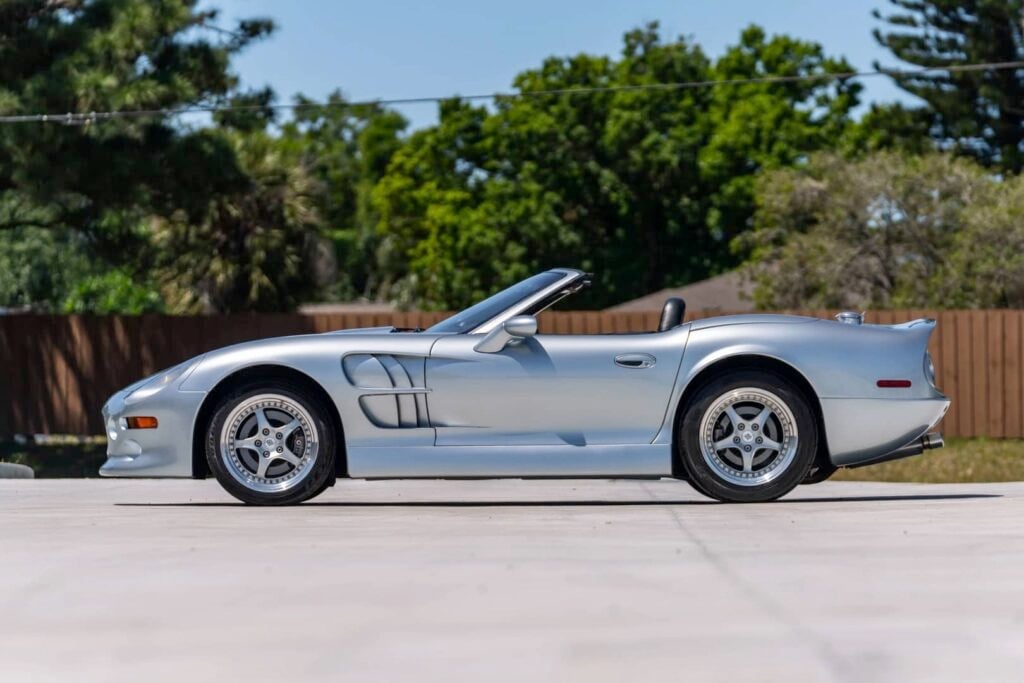
The 1999 Shelby Series 1 Roadster holds a special place in automotive history as it is the only car that Carroll Shelby designed from scratch, rather than modifying an existing platform. Unveiled at the 1997 Los Angeles Auto Show, this vehicle was intended to be a modern interpretation of the iconic AC Cobra. Its development began in 1994 with the goal of creating a lightweight American sports car that could compete with European exotics.
It featured an advanced all-aluminum chassis with honeycomb panels, a carbon fiber and fiberglass composite body, and a 4.0L DOHC V8 Oldsmobile Aurora engine, initially producing 320 horsepower. This powerful engine was placed behind the front axle for optimal weight distribution, and it came paired with a 6-speed ZF manual transaxle. Despite its performance focus, the car also offered luxury amenities such as power steering, disc brakes, air conditioning, and a premium sound system.
However, production issues, including problems with the soft top and inconsistent build quality, affected the early cars. Although a production run of 500 units was planned, only 249 Series 1 Roadsters were ultimately constructed by Shelby American, all designated as 1999 models. The 152nd of these will be offered by Mecum Auctions at their upcoming Florida Summer Special 2025 sale and has covered just under 7,800 miles since new. It presents well and appears to have been well maintained over the years.
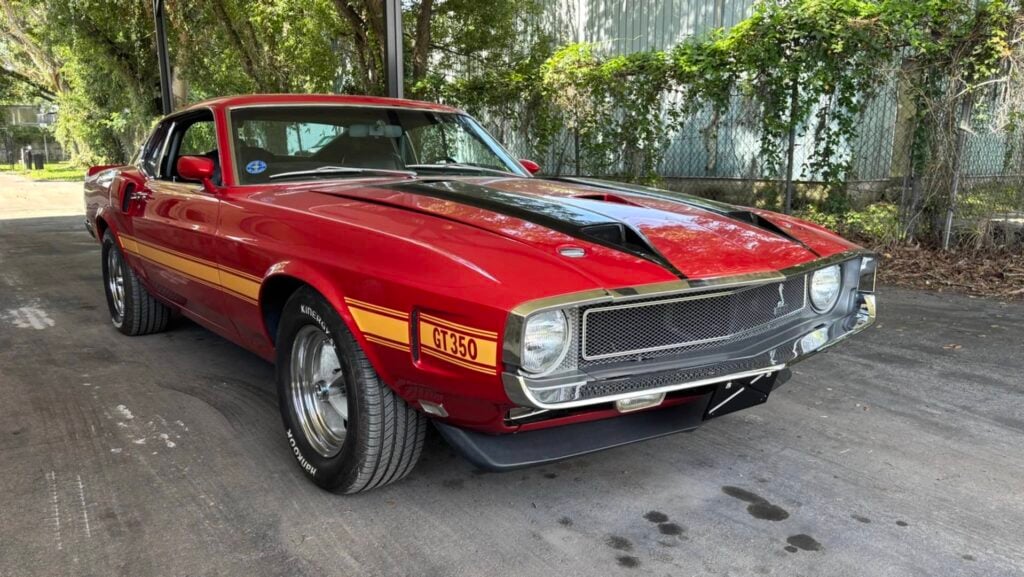
The 1970 Shelby GT350 Fastback holds a somewhat distinctive and abbreviated position within the Shelby Mustang series. By this point, Carroll Shelby’s direct involvement in the design and production process had diminished significantly, as Ford was taking over much of the operation and developing its own high-performance Mustang models, which led to some internal competition.
In terms of the model year, the 1970 vehicles were essentially unsold 1969 Shelby GT350s that had their Vehicle Identification Numbers (VIN) updated and received minor cosmetic enhancements so they could be sold as the new model year. This re-VINning process was overseen by the FBI, who were responsible for destroying the original 1969 VIN plates and fitting them with new 1970 plates to ensure compliance with federal laws.
The most noticeable changes from the 1969 Shelby GT350 Fastback to the “1970” version primarily involved aesthetics and were a direct consequence of the re-VINning process. To distinguish these re-released cars, Shelby American (operating under Ford’s guidance) added two black stripes to the hood and a front chin spoiler, features not seen on the 1969 models.
On a technical level, the 1970 GT350 retained the same 351 cubic-inch Windsor V8 engine as the 1969 model, which boasted an output of 290 horsepower. This powerful engine could be paired with either a 4-speed manual or a 3-speed FMX automatic transmission. Due to the unusual manufacturing method employed, the 1970 Shelby GT350 Fastback is considerably rarer than its 1969 counterpart, with only 261 fastbacks and 57 convertibles officially re-VIN’d and sold as 1970 models.
Mecum will offer one of the Fastback examples for sale in Kissimmee this coming weekend. It’s finished in red with gold side stripes and the aforementioned black hood stripes. It’s equipped with an automatic transmission, power steering, and power brakes and includes a copy of its original invoice.
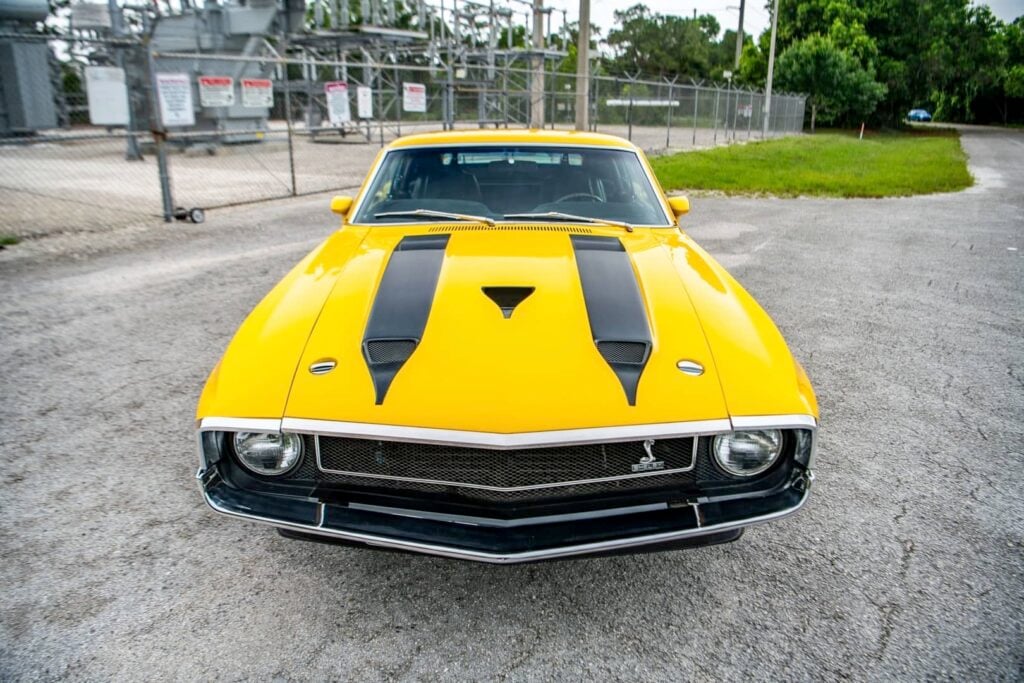
The 1970 Shelby GT500 Fastback, similar to its GT350 sibling, marks the conclusion of the initial run for Shelby Mustangs. However, it was not an entirely new car for that year. Instead, all 1970 GT500s were actually unsold 1969 models that had been retained and re-issued, with their VINs changed and minor cosmetic enhancements applied to make them appear as current inventory. This unusual situation came about due to Ford’s growing influence over the Shelby program and a need to clear out any remaining stock.
Equipped with the potent 428 Cobra Jet V8 engine, the GT500 boasted official ratings of 335 horsepower, although many believed it could produce significantly more power. As the top performance option in the Shelby lineup, the 1970 GT500 Fastback underwent some aesthetic upgrades, including a black hood stripe and a front chin spoiler, which helped set these cars apart from their 1969 predecessors.
Mecum Auctions will offer an unrestored 1970 Shelby GT500 Fastback for sale at the upcoming Florida Summer Special 2025 auction later this week. It’s finished in Grabber Yellow paint, one of only 23 to leave the factory in that color, and includes a Marti Report that shows it as one of just two produced in this configuration with an automatic transmission, power steering and brakes, and air conditioning.
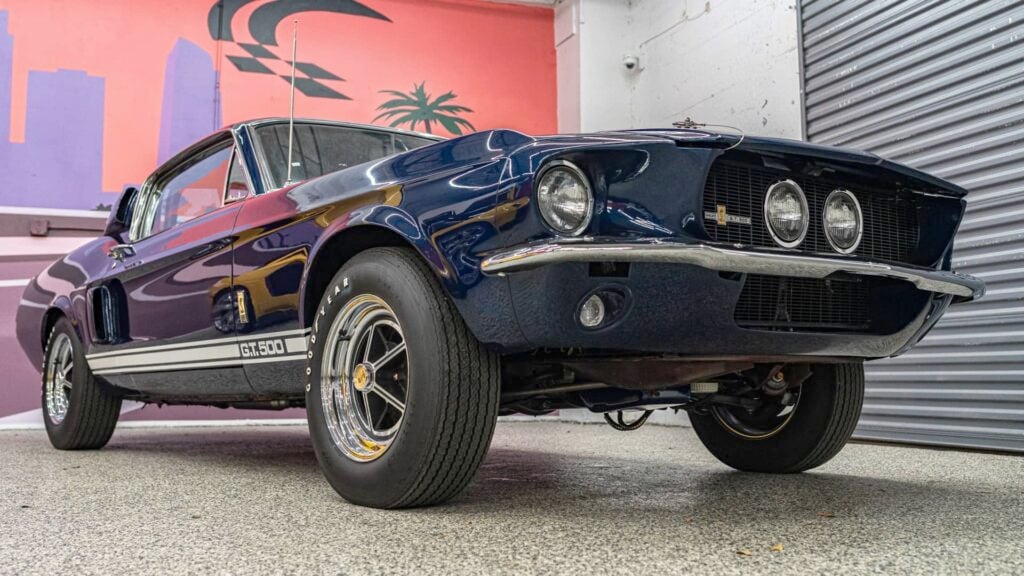
The 1967 Shelby GT500 Fastback represented a significant step forward for the Shelby Mustang, moving away from its origins as a race car and towards a more powerful, grand touring vehicle. This model introduced unique front and rear styling elements that distinguished it clearly from the standard Ford Mustang. The redesign allowed for the addition of larger engines and more aggressive bodywork.
One of the most distinctive features of the 1967 Shelby GT500 was its engine. In contrast to earlier Shelbys, which often focused on lighter, smaller displacement engines, this one came with the 428 cubic-inch Police Interceptor V8. Although officially rated at 355 horsepower, many believed the actual power output was higher.
The GT500 was typically paired with either a robust 4-speed manual or a heavy-duty C6 automatic transmission, providing immense torque and strong straight-line performance. This solidified its reputation as a potent street machine rather than just a pure track car. Its interior boasted a roll bar, wood-grain trim, and an array of gauges, highlighting its dual nature as both a high-performance vehicle and a comfortable touring car.
The example that will be offered for sale by Mecum Auctions this weekend benefits from a concours-quality restoration completed by John Brown of Thoroughbred Restorations back in 2023. It’s equipped with a four-speed manual transmission and includes a Deluxe Marti Report.
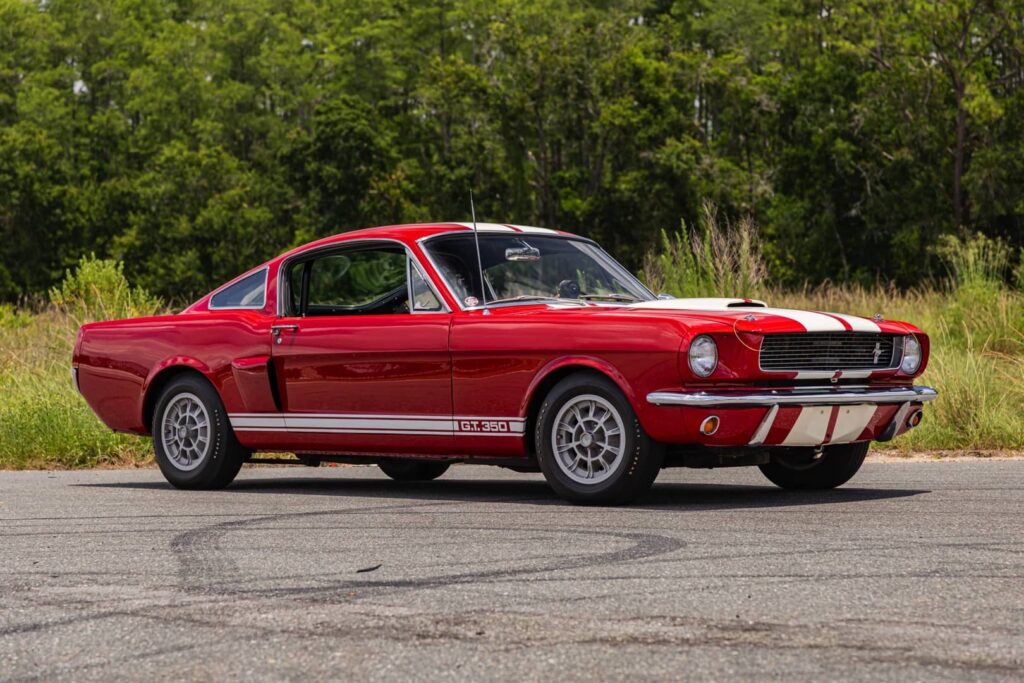
The 1966 Shelby GT350 Fastback built on the remarkable success of its 1965 predecessor, refining the formula that established Shelby American as a significant player in the high-performance street and track car market. While the 1965 model was primarily a raw, track-focused machine, the 1966 version introduced a touch more civility and broader appeal without sacrificing its core performance values. One of the most noticeable exterior changes was the addition of functional plexiglass rear quarter windows, which replaced the fiberglass vents from the ’65 model, enhancing rear visibility and giving it a slightly less aggressive look.
Under the hood, the 1966 GT350 retained the potent K-code 289 cubic-inch Ford Hi-Po V8 engine, officially rated at 306 horsepower, with a high-rise intake manifold and a Holley four-barrel carburetor. Although it remained a formidable performer, Shelby American made efforts to make it more suitable for everyday driving by offering optional automatic transmissions for the first time. Production for 1966 significantly exceeded that of 1965, with 1,373 fastbacks produced (excluding the GT350H “Rent-A-Racers” built for Hertz).
The example being offered by Mecum Auctions this coming weekend in Kissimmee is equipped with a Paxton supercharger and is finished in red with white stripes. The car includes copies of the original Shelby paperwork and is listed in the Shelby registry.

